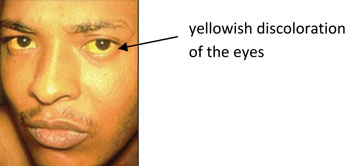Mode of transmission and clinical manifestation of HBV
HBV is carried in the blood and other body fluids of people who are infected. It is usually spread by contact with infected blood or body fluids in the following ways:
- Injury or injection: with contaminated sharp unsterile objects or instruments.
- From a pregnant mother to her baby: During birth, the virus which exists in the blood or body fluid of the mother may be transmitted to the baby.
- Unprotected sexual intercourse: During sexual intercourse without a condom, the virus which exists in the blood of the infected person may be transmitted to the other partner through scratches or wounds, or through small breaks in the delicate membranes covering the sexual organs.
The incubation period of hepatitis B averages six weeks, but may be as long as six months. Young children who are infected (usually at birth) often show no symptoms. Also, a larger proportion of children become chronic carriers of HBV, compared with infected adults.
Do you remember what a 'chronic carrier' means?
It is a person who carries the infection for a long period of time and can transmit the infectious agent to others, but without showing any symptoms of the disease themselves.
People who show symptoms of hepatitis B disease may feel weak and experience stomach upsets and other flu-like symptoms, which may last several weeks or months. They may also have very dark urine or very pale stools. Jaundice, which presents with yellowing of the skin or a yellow colour in the whites of the eyes (Figure 4.5), is common. Jaundice results when the liver is unable to deal with a yellow substance called bilirubin, which is formed when old red blood cells are broken up and their constituents are recycled to make new red blood cells. If the liver is damaged, it can't deal with the bilirubin, which builds up in the body causing the yellow discoloration.

A laboratory blood test is required for confirmation of hepatitis B infection. Most HBV infections in adults are followed by complete recovery and 90% of adults will be completely rid of the virus within six months. Recovery also means that they are naturally protected from further infection with HBV for the rest of their lives. However, 30–90% of infants and children who become infected with HBV become chronic carriers of the virus, and they have a much increased risk of developing chronic, life-threatening liver damage or liver cancer much later in life.